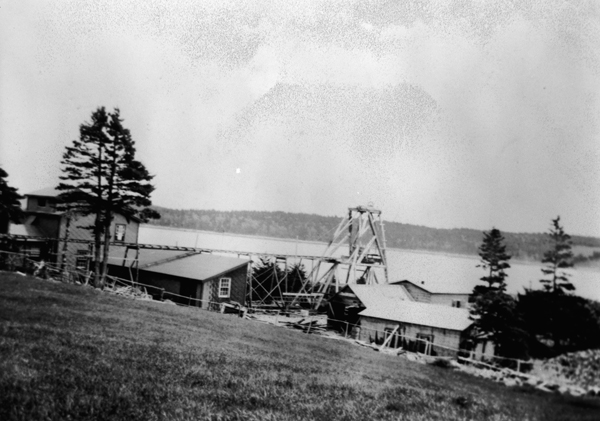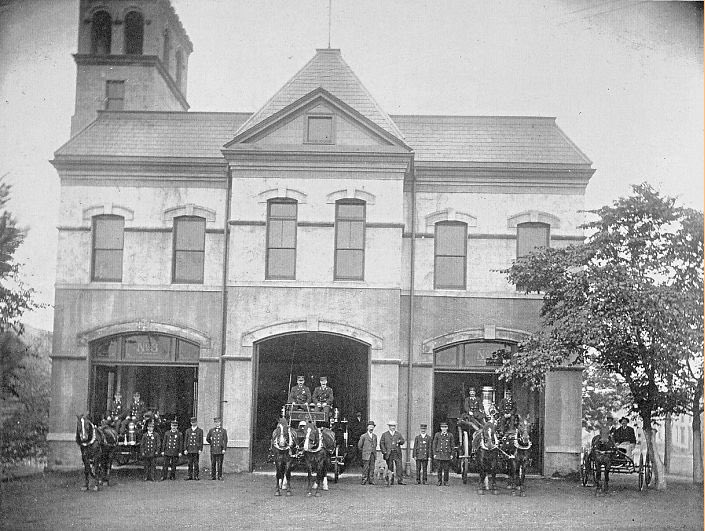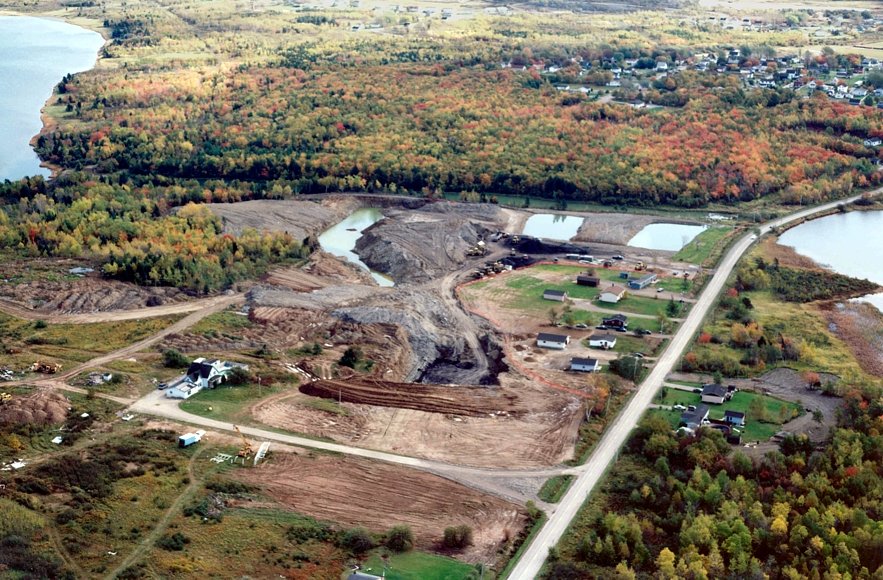Wine Harbour, #GuysboroughCounty, was named for a ship that sank in the harbour with its cargo of wine.
Check out this thread for the history of #gold mining in the area!
#nspoli #cbpoli #novascotia #capebreton #nshistory
@SeanFraserMP @modgcao @lloydphines

Check out this thread for the history of #gold mining in the area!
#nspoli #cbpoli #novascotia #capebreton #nshistory
@SeanFraserMP @modgcao @lloydphines


According to Nova Scotia’s Chief Gold Commissioner at the time, gold was discovered in the Wine Harbour Gold District in July 1860 by Joseph Smith when he spotted a few specks of #gold in the sand around Barachois Cove.
#nspoli #cbpoli #novascotia #capebreton #nshistory
#nspoli #cbpoli #novascotia #capebreton #nshistory

However, it was not until a year later, in July 1861, that Smith made the discovery that triggered the #gold rush in Wine Harbour. He found a small piece of gold-bearing quartz while prospecting on the northeastern shore of the harbour and...
#nspoli #cbpoli #novascotia
#nspoli #cbpoli #novascotia
...was given a free claim (no staking fees for 21 years) as the reward for the discovery.
While Smith is officially credited with the discovery, some credit a Katie Doody who is said to have found #gold-bearing quartz on the shore.
#nspoli #cbpoli #novascotia #capebreton
While Smith is officially credited with the discovery, some credit a Katie Doody who is said to have found #gold-bearing quartz on the shore.
#nspoli #cbpoli #novascotia #capebreton

Doody married a Mr. Stewart sometime after the find and moved to Boston where she lived out her days.
Prospectors flocked to the area as word got out and by September 1861 there were 200 people seeking or mining #gold.
#nspoli #cbpoli #novascotia #capebreton #nshistory
Prospectors flocked to the area as word got out and by September 1861 there were 200 people seeking or mining #gold.
#nspoli #cbpoli #novascotia #capebreton #nshistory

By 1862, 7 leads had been found and the Smith Lead (the free claim) was the biggest producer. It averaged six ounces of #gold per ton of ore, an excellent output.
In 1863 more gold was produced from the Wine Harbour District than from any other in the province.
#nspoli #cbpoli
In 1863 more gold was produced from the Wine Harbour District than from any other in the province.
#nspoli #cbpoli

The next 3 years, however, saw a steady decline and the production fell from over 4,000 ounces in 1864 to 845 ounces in 1867.
One bright spot in that period was 1866 when the Hattie claim yielded 125 ounces of #gold in five tons of ore – 25 ounces per ton! - an extraordinary...
One bright spot in that period was 1866 when the Hattie claim yielded 125 ounces of #gold in five tons of ore – 25 ounces per ton! - an extraordinary...

...amount given that successful mines in that era often produced one or two ounces per ton.
After 1876, mining was small-scale and sporadic until 1899-1904 when production was again above the 1000-ounce threshold each year, with a high of 2088 ounces in 1900.
#nspoli #cbpoli
After 1876, mining was small-scale and sporadic until 1899-1904 when production was again above the 1000-ounce threshold each year, with a high of 2088 ounces in 1900.
#nspoli #cbpoli

Mining stopped again in 1907 and no other mining activity was documented until 1926 when a large amount of #gold was extracted.
The area was active again from 1934-1939.
#nspoli #cbpoli #novascotia #capebreton #nshistory
The area was active again from 1934-1939.
#nspoli #cbpoli #novascotia #capebreton #nshistory

In 1936, Mineral Industries Limited built a ten-stamp mill and carried out mining on the Plough Lead (so named because #gold was discovered in a furrow by a Mr. MacKenzie who was ploughing).
#nspoli #cbpoli #novascotia #capebreton #nshistory
#nspoli #cbpoli #novascotia #capebreton #nshistory

The Plough was the district’s most productive lead (a lead is the gold-bearing quartz veins that are mined). The lead was as wide as up to 40 feet, a tremendous size since leads are often mere inches to a couple feet wide.
#nspoli #cbpoli #novascotia #capebreton #nshistory
#gold
#nspoli #cbpoli #novascotia #capebreton #nshistory
#gold

The Plough was discovered in the early 1870s and worked successfully until about 1874-75 when a fault cut off the lead and hid the location of the rest.
A fault is a fracture, or zone of fractures, between two blocks of rock.
#nspoli #cbpoli #novascotia #capebreton #nshistory
A fault is a fracture, or zone of fractures, between two blocks of rock.
#nspoli #cbpoli #novascotia #capebreton #nshistory

Faults are caused by geological forces like tectonic plate movement and they allow the blocks of rock to move relative to each other. In the case of the Plough Lead, it was split by the fault and one side of it was shifted to another – unknown - location.
#nspoli #cbpoli
#nspoli #cbpoli

Several companies searched for the continuation of the lead by digging shafts and tunnels but the Plough proved elusive for a quarter-century. It was not until 1898 that Wine Harbour miner Matthew McGrath, after watching the failed attempts of others for years, felt...
#nspoli
#nspoli

...that he knew where to look. He secured the property and sank a shaft that intersected the lead. The Plough went on to produce almost a quarter of all #gold produced in the district - a total of 9870 ounces - before mining stopped in Wine Harbour in 1939.
#nspoli #cbpoli
#nspoli #cbpoli

The district produced a total of 42,726 ounces between 1862-1939. Wine Harbour’s gold was said to be more valued than any other gold because it had an unusually bright colour.
Mining in Wine Harbour, as with many historical #NovaScotia #gold mines, did not end because...
#nspoli
Mining in Wine Harbour, as with many historical #NovaScotia #gold mines, did not end because...
#nspoli

...the resource was depleted. Other factors were often the cause of #gold mines shutting down, including inefficient historical mining and milling techniques, lack of capital, lack of access to inexpensive electricity...
#nspoli #cbpoli #novascotia #capebreton #nshistory
#nspoli #cbpoli #novascotia #capebreton #nshistory

...challenges associated with transporting equipment and supplies through the wilderness, and lack of labour. (Miners were sometimes drawn to other jurisdictions by reports of riches being made. Also, the first and second world wars made it difficult to hire men.
#nspoli #cbpoli
#nspoli #cbpoli

This likely contributed to the Plough Lead shutting down in 1939 as WWII started).
Wine Harbour is therefore seen as having potential to be returned to production in the modern era since all of the above challenges are now easily addressed.
#nspoli #cbpoli #novascotia #capebreton
Wine Harbour is therefore seen as having potential to be returned to production in the modern era since all of the above challenges are now easily addressed.
#nspoli #cbpoli #novascotia #capebreton

In fact, almost all the activity in #NovaScotia’s #gold sector is at historical mines where deposits were proven during our early gold rushes but modern science and technology make it possible to mine profitably while, of course, taking proper care of the environment.
#nspoli
#nspoli

There has been exploration in Wine Harbour on and off since the 1960s. Hopefully we will one day again have #gold mining and new jobs in the area.
#nspoli #cbpoli #novascotia #capebreton #nshistory

#nspoli #cbpoli #novascotia #capebreton #nshistory


• • •
Missing some Tweet in this thread? You can try to
force a refresh



























